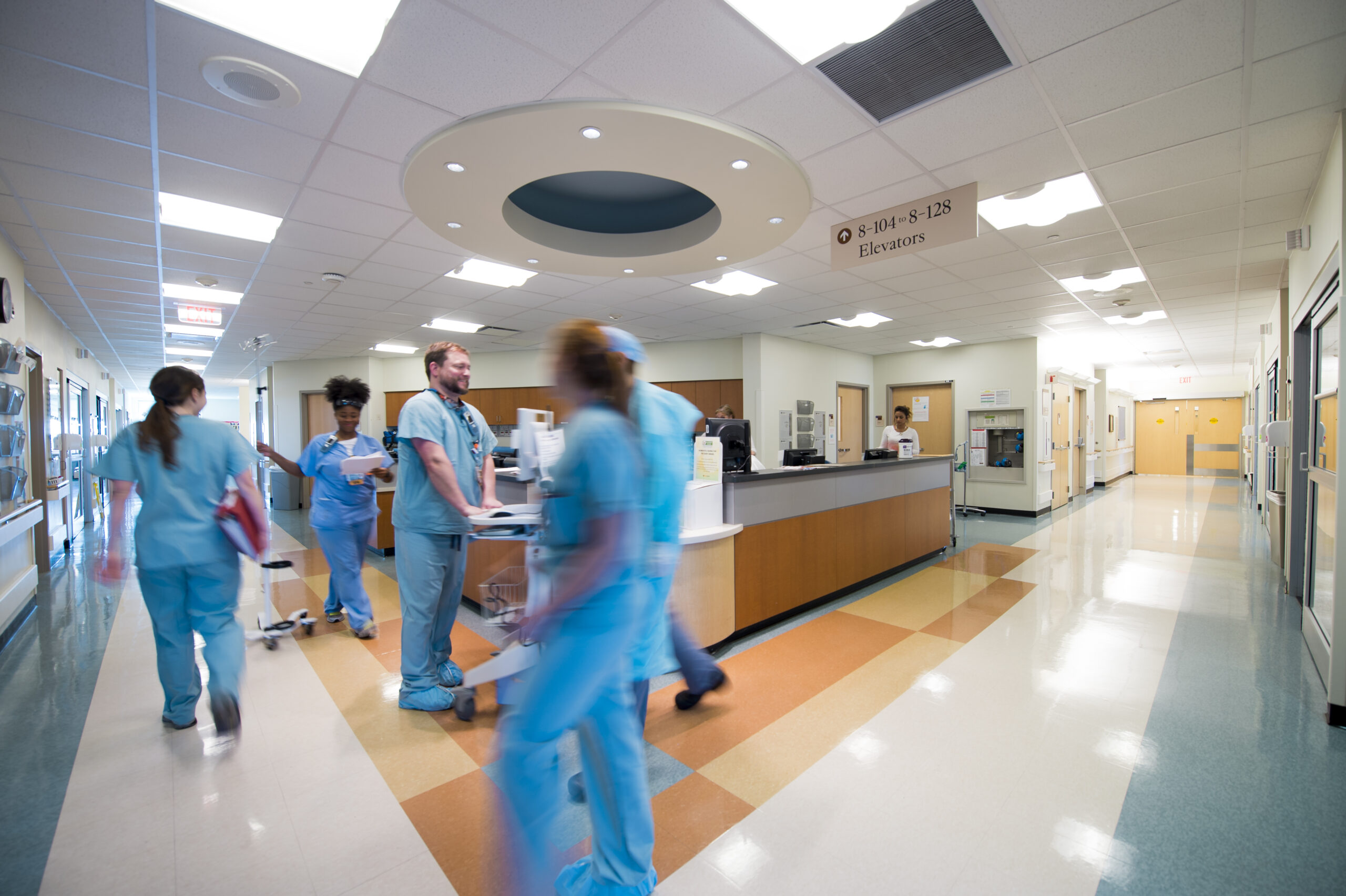“We knew we had to be nimble”: Wright Center helps create new models for clinical research during pandemic

If you get COVID-19, go to your local academic research hospital. That’s what Margaret Lessard told her parents.
“The pandemic really emphasized to me how going to an academic medical center opens up the possibilities for you as a patient,” said the senior clinical research coordinator at VCU Health. “We had treatments here that weren’t available anywhere else.”
Lessard would know. She was part of a team of researchers, coordinators and leaders at VCU and VCU Health that quickly pivoted this year to focus on treatment trials for COVID-19. With the help of the C. Kenneth and Dianne Wright Center for Clinical and Translational Research, physicians were able to get trials up and running in record speed, recruit participants and gather results efficiently and safely.
The results of that pivot have created a prototype for the new normal of research at VCU.

“We have learned a good bit from this experience,” says Mary Harmon, Ph.D., director of clinical research at VCU Health. “In the health system, we were able to blow up a lot of processes and put them back together. Research itself is coming out better on the backend as a result of our experience.”
Harmon credits the investigators for having the right connections established in advance. The remdesivir trials, for example, that Arun Sanyal, M.D., a liver specialist and associate director at the Wright Center, brought in March stemmed from his ties to the pharmaceutical company. Other investigators’ decades of experience studying inflammation led to two trials of anti-inflammatory drugs in the months that followed.
“They were able to access those experimental therapies by building on their reputation and their past experience,” says Harmon.
It would be up to administrators and coordinators to help get the trials open quickly. The Office of the Vice President for Research and Innovation’s director of clinical research and compliance, Lisa Ballance, M.A., organized a daily activation call to expedite the regulatory process and contracts.
By April, the COVID-19 Clinical Trials Oversight Committee, chaired by Wright Center Director F. Gerard Moeller, M.D., was established to prioritize and facilitate virus-related trials.
“We knew we had to be nimble. We knew we had to be fast,” says Harmon. “It was coming at us like a huge wave, but we were able to leverage the experience of our study teams to refocus all of our efforts to the COVID-19 response.”
The collaboration led to studies being open in days, not weeks – four days in the case of remdesivir, what Harmon calls “a major feat.”
Once trials were activated, study teams needed to adapt to the contagious virus and isolated patients. Concerned about personal protective equipment supply, teams sought to limit contact and not overwhelm sick patients.
“We knew that we had to have something like an air traffic controller in place,” Harmon says.

That’s where Lessard came in. With the help of Wright Center funding, she shifted from her role in pediatrics research to a coordinator of COVID-19 clinical trials. Running daily calls, Lessard helps coordinators connect, triage new patients into trials and hash out challenges and regulatory questions. She implemented the prioritization plans developed by the oversight committee.
“It’s pretty remarkable to have so many different teams and coordinators working together,” Lessard says. “That’s only going to make research at VCU better. We’ve been able to teach each other a lot.”
The coordination and communication has led to strong participation rates for COVID-19 treatment trials. Generally, about two percent of VCU Health patients agree to participate in clinical trials. For COVID-19 the numbers have hovered around one-third.
“It’s been a fantastic success story in terms of putting patients on clinical trials and offering underserved populations opportunities for access to these novel treatments,” says Harmon.
And it’s a trend that she hopes continues beyond the pandemic. “We want everyone that comes through the door to be thinking, ‘maybe this is my opportunity to participate in a research study.’”
Harmon cites the oversight committee and Lessard’s position as models for what could make that happen – collaborative processes that strengthen the tie between the health system and the university. Because higher and more diverse patient participation means better research for everyone.
“We got studies up and running a lot quicker,” Lessard says. “But we’re also finishing studies a lot quicker. We’re seeing the results – what the data means – a lot quicker than we normally do in research.
“It’s been rewarding to see what translates from our work on the ground.”
Categories Clinical Research, Clinical Trials, Collaboration, Staff